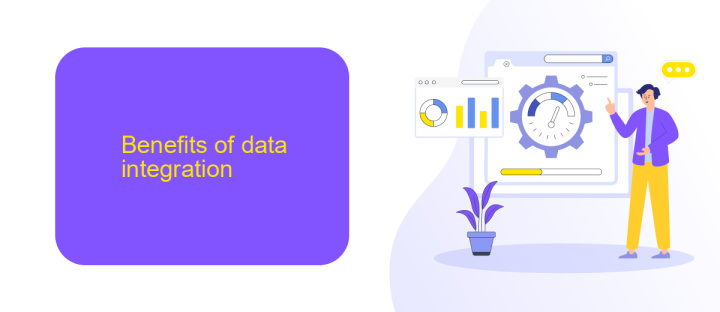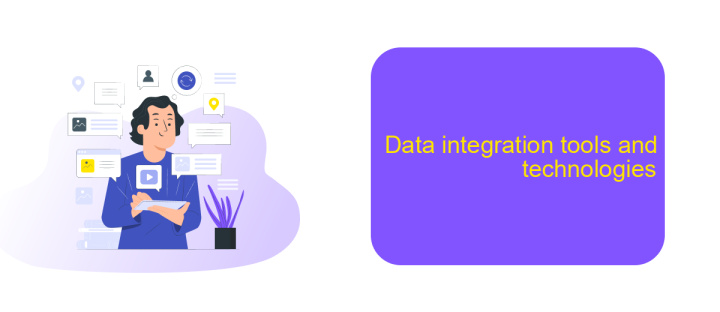What is Data Integration Quizlet
Data integration is a critical aspect of modern data management, enabling organizations to combine data from various sources into a unified view. This article explores the fundamentals of data integration, its importance, and how it can be effectively implemented. By understanding these concepts, businesses can improve decision-making, enhance data quality, and streamline operations. Let’s dive into the world of data integration with Quizlet.
What is data integration?
Data integration is the process of combining data from different sources to provide a unified view. This practice is essential for businesses and organizations to ensure that all data is accessible, consistent, and up-to-date. By integrating data, companies can enhance decision-making, improve efficiency, and gain a comprehensive understanding of their operations.
- Combining data from multiple sources
- Ensuring data consistency and accuracy
- Providing a unified view for better decision-making
There are various tools and services available to facilitate data integration. One such service is ApiX-Drive, which helps automate the integration process without requiring extensive technical expertise. By using ApiX-Drive, businesses can seamlessly connect different applications and data sources, streamlining their operations and ensuring that all data is synchronized and accessible in real-time.
Benefits of data integration

Data integration offers numerous benefits that can significantly enhance business operations. One of the primary advantages is the ability to consolidate information from multiple sources into a single, unified view. This not only improves data accuracy but also ensures that decision-makers have access to comprehensive and up-to-date information. By eliminating data silos, organizations can streamline their workflows, reduce redundancy, and improve overall efficiency.
Another significant benefit of data integration is the facilitation of real-time data access and analysis. Services like ApiX-Drive enable seamless integration between various applications and platforms, allowing businesses to automate data transfers and synchronize information effortlessly. This leads to faster decision-making processes and more agile responses to market changes. Additionally, integrated data can enhance customer experiences by providing a holistic view of customer interactions across different touchpoints, enabling more personalized and effective communication strategies.
Challenges of data integration

Data integration poses several challenges that can complicate the process and affect outcomes. These challenges often stem from the complexity of combining data from various sources and ensuring consistency and accuracy.
- Data Quality: Ensuring the data from different sources is clean, accurate, and consistent can be a significant hurdle.
- Compatibility Issues: Different systems may use various formats and standards, making it difficult to integrate data seamlessly.
- Scalability: As the volume of data grows, maintaining performance and efficiency becomes increasingly challenging.
- Security and Compliance: Protecting sensitive data and adhering to regulatory requirements is crucial during integration.
- Cost and Resources: The financial and human resources required for effective data integration can be substantial.
To address these challenges, tools like ApiX-Drive can be invaluable. ApiX-Drive simplifies the integration process by providing a user-friendly platform that connects various applications and automates data flow. This not only reduces compatibility issues but also enhances scalability and security, making data integration more efficient and reliable.
Data integration tools and technologies

Data integration tools and technologies are essential for combining data from different sources into a unified view. These tools help organizations streamline their data management processes, ensuring that data is accurate, consistent, and readily available for analysis and decision-making.
Several technologies and platforms are available to facilitate data integration. These include ETL (Extract, Transform, Load) tools, data virtualization, and API-based integrations. Each of these technologies offers unique features and benefits, making it easier to handle complex data integration tasks.
- ETL Tools: Talend, Informatica, Apache Nifi
- Data Virtualization: Denodo, Red Hat JBoss Data Virtualization
- API-Based Integrations: ApiX-Drive, MuleSoft, Zapier
ApiX-Drive, for instance, is a powerful service that simplifies the integration of various applications and services through APIs. It enables users to set up automated workflows without the need for extensive coding knowledge, making it an excellent choice for businesses looking to enhance their data integration capabilities efficiently.
Case studies of successful data integration projects
One notable case study of successful data integration is the implementation by a global retail company. They faced challenges in synchronizing data across multiple platforms, including their e-commerce site, in-store systems, and customer relationship management (CRM) software. By leveraging ApiX-Drive, they were able to seamlessly connect these disparate systems, ensuring real-time data flow and consistent information across all channels. This integration not only improved operational efficiency but also enhanced customer experience by providing accurate inventory levels and personalized marketing efforts.
Another example is a healthcare provider that integrated patient data from various sources such as electronic health records (EHR), lab results, and billing systems. Using ApiX-Drive, they automated data transfers between these systems, reducing manual entry errors and ensuring that healthcare professionals had access to up-to-date patient information. This integration enabled better patient care coordination, streamlined administrative processes, and improved overall service delivery. The success of these projects highlights the critical role of effective data integration in achieving business goals and operational excellence.
FAQ
What is Data Integration?
Why is Data Integration important?
What are common challenges in Data Integration?
How can automation help in Data Integration?
What are the key components of a Data Integration solution?
Apix-Drive is a universal tool that will quickly streamline any workflow, freeing you from routine and possible financial losses. Try ApiX-Drive in action and see how useful it is for you personally. In the meantime, when you are setting up connections between systems, think about where you are investing your free time, because now you will have much more of it.

